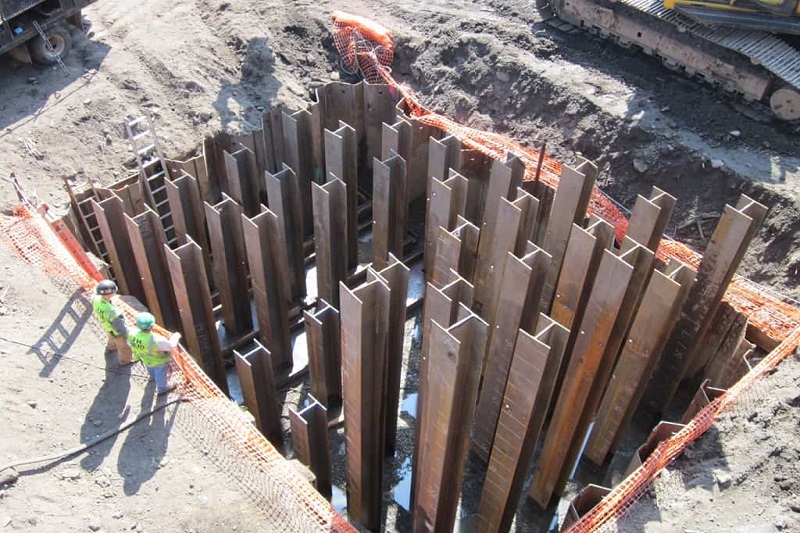Pile is a cylindrical beam made of strong materials like steel or concrete. The piles are used to carry the load of the structure of a building deep into the ground with the solid foundation where it is built. A pile footing consists of a group of piles combined to support the structure built over them.
Therefore, it is mainly inserted in places with a lower subsoil level. They are used in places with unequal landforms and soils at shallow depths. Apart from that, Pile footing can also lift a structure to the desired height.

When do you need pile footing?
The following reasons show the situations in which pile footing is required.
- Areas with weak underlying soil.
- Places having water table issues and soil problems.
- When the load of the structure is very high.
- To build a structure upon water bodies.
Benefits of pile footing:
- Here are the advantages of having the pile footing.
- It highly keeps the foundation safe.
- You can have it in any kind of surfacing.
- This structure is very economic.
- With having your pile foundation done, you can expect a great value while reselling the house.
Classification of Pile footing
There are various types depending on their usage when it comes to piling footing. Hence, pile footing is classified based upon the following:
The type of material used
- Steel piles
- Timber piles
- Concrete piles
- Composite piles
Based on its function
- Friction piles
- Bearing piles
- Soil Compactor piles
- Sheet piles
Commonly used piles with their advantages and disadvantages
These are different types of piles and their advantages and disadvantages that you need to know.
Concrete Piles
Concrete piles can be rectangular, cylindrical, or squared and are made of reinforced cement concrete. The size of prestressed concrete piles varies from 12 to 66 inches. Hence, the squared piles which are usually used for constructing buildings are around 12 inches. Large piles are used for the construction of bridges. Cylindrical piles with a diameter of 66 inches are used in bridge and marine constructions.
Advantages
- Firstly, it can be used for underwater purposes.
- It is not affected by any chemical actions of the atmosphere and soil and thus stays long.
- Along with that, the manufacturing cost is less compared to other piles.
- Lastly, it can easily be built with the exact shape and size of our requirements.
Timber piles
Timber piles, the trunk of a tree, are uneconomically used these days. It can take up to 15 to 25 tons/pile. Usually, its length is around 20 -70 feet. The bottom part will be sharp with an iron shoe.
Advantages
- Firstly, it is cheaply available.
- The structures can be made easily because it requires less construction time.
- It can be built in places having side friction.
- As it is not heavy when compared with other piles, it can be lifted easily.
Steel piles
It is very strong compared to other piles. It requires only a small sectional area and is easy to be placed and constructed. These are filled with concrete to reduce the damage. It can be used in places where piles with long lengths are required.
Advantages
- Steel piles are capable of penetration through any layer in the ground.
- It possesses a high load-bearing capacity.
- The rough handling of these piles won’t cause any trouble.
- It provides a strong and durable foundation.

Conclusion
Pile footings are required in every building construction these days and have become the main part of construction works. If you do not have it, go for it to save your house in the future.

